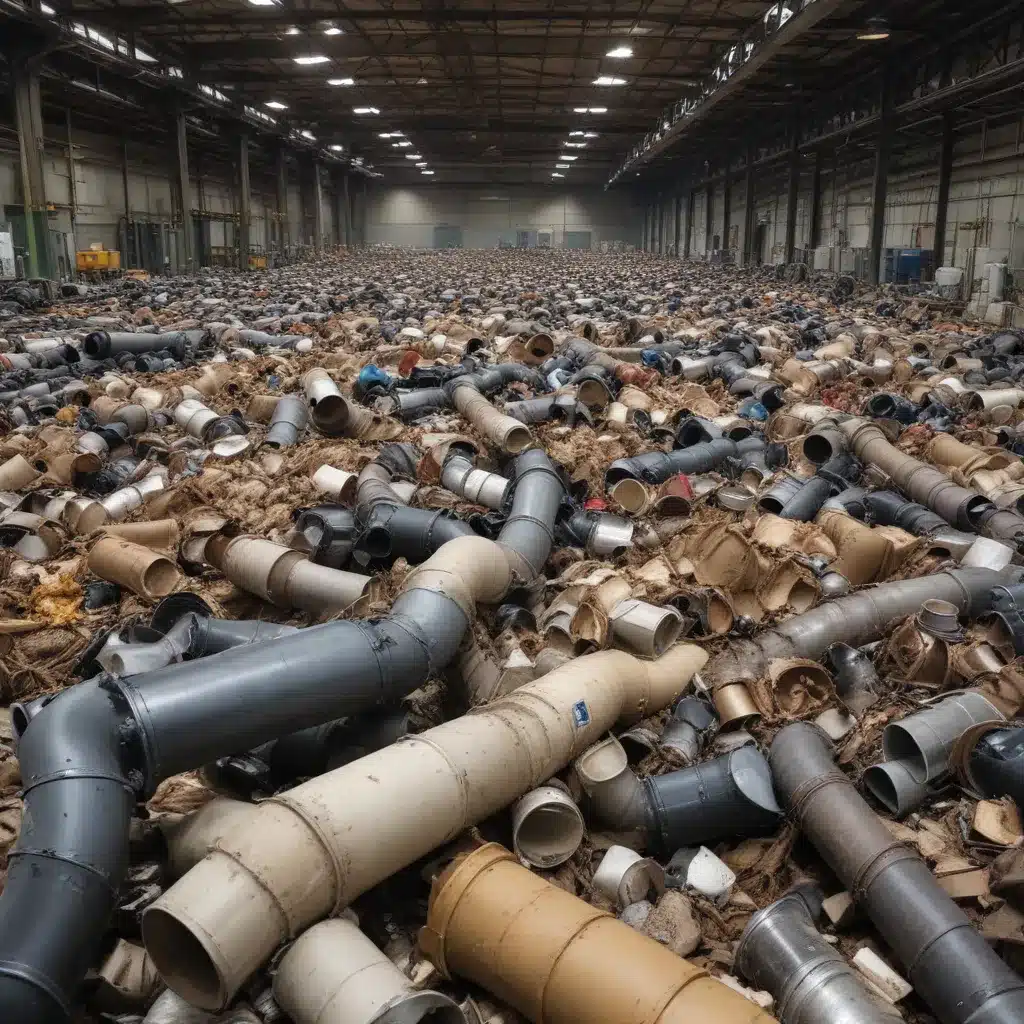
Optimizing Industrial Symbiosis: Leveraging Waste Streams for Energy Recovery
In Europe’s pursuit of a sustainable future, industrial symbiosis has emerged as a pivotal strategy for advancing the circular economy. By optimizing the management and valorization of industrial waste streams, organizations can unlock new pathways for energy recovery, emissions reduction, and resource efficiency. This article explores the dynamic intersection of industrial symbiosis and energy systems, highlighting the innovative approaches that are reshaping Europe’s industrial landscape.
Waste Stream Management
At the heart of industrial symbiosis lies the strategic identification and characterization of waste streams. Waste stream identification involves meticulously mapping the by-products and residues generated across various industries, uncovering hidden opportunities for reuse and repurposing. By thoroughly understanding the composition, quantity, and quality of these waste streams, organizations can unlock their true potential as valuable resources.
The process of waste stream characterization goes beyond mere identification, delving into the intricate details that inform effective valorization. Advanced analytical techniques, such as material flow analysis and life cycle assessment, provide crucial insights into the environmental impacts, economic viability, and technological feasibility of waste stream utilization. This data-driven approach empowers decision-makers to make informed choices about the most promising waste-to-resource pathways.
With a comprehensive understanding of waste streams, the next step is waste stream valorization. This entails the transformation of waste into valuable products, energy, or other useful applications. Innovative technologies, such as thermal treatment, biological conversion, and hybrid processes, enable the extraction of energy and materials from waste, reducing landfill disposals and fostering a more circular industrial ecosystem.
Energy Recovery Strategies
One of the primary drivers of industrial symbiosis is the pursuit of energy recovery. By leveraging waste streams as feedstocks for energy generation, organizations can reduce their reliance on fossil fuels, lower greenhouse gas emissions, and enhance their overall energy security.
Thermal treatment technologies, such as incineration, pyrolysis, and gasification, offer efficient means of converting waste into heat, electricity, or fuels. These processes harness the inherent calorific value of waste materials, transforming them into valuable energy sources that can be integrated into industrial operations or fed into the grid.
Biological conversion processes, on the other hand, utilize microorganisms to break down organic waste through anaerobic digestion or fermentation. These methods generate biogas and biofuels, which can be directly utilized for energy production or further refined for transportation and other applications.
Increasingly, hybrid approaches are emerging, combining thermal and biological technologies to optimize energy recovery from diverse waste streams. These integrated systems capitalize on the complementary strengths of different conversion methods, maximizing the overall efficiency and versatility of industrial symbiosis.
Enabling Factors for Industrial Symbiosis
The successful implementation of industrial symbiosis hinges on a robust ecosystem of enabling factors, including policy and regulatory frameworks, stakeholder engagement, and information management systems.
Policy and regulatory frameworks play a crucial role in incentivizing and facilitating industrial symbiosis. Across Europe, governments are introducing targeted policies, such as extended producer responsibility schemes, landfill diversion targets, and waste management regulations, to drive the adoption of circular economy practices.
Effective stakeholder engagement and collaboration are equally essential. Industrial symbiosis requires the active participation and coordination of various actors, including manufacturers, waste management companies, energy providers, and local authorities. Fostering a culture of trust, transparent data-sharing, and joint problem-solving is key to unlocking the full potential of these synergistic relationships.
Underpinning the success of industrial symbiosis are robust information management systems. Digital tools, such as material flow analysis software and industrial symbiosis platforms, enable the seamless exchange of data, the identification of synergistic opportunities, and the monitoring of the environmental and economic performance of waste-to-energy initiatives.
Sustainability Metrics and Assessment
Evaluating the sustainability of industrial symbiosis initiatives is crucial for ensuring their long-term viability and impact. Environmental impact indicators, such as greenhouse gas emissions, resource consumption, and waste diversion rates, provide a comprehensive assessment of the ecological benefits.
Alongside environmental considerations, the economic feasibility of industrial symbiosis projects is a critical factor. Detailed analyses of capital expenditures, operational costs, and potential revenue streams from energy recovery and material valorization help to establish the business case for these initiatives.
Importantly, the social and community benefits of industrial symbiosis must also be taken into account. Initiatives that create local employment, enhance resource security, and foster community engagement can contribute to the broader societal acceptance and adoption of these transformative approaches.
Circular Economy Principles in Industrial Symbiosis
At the heart of industrial symbiosis lies the fundamental principles of the circular economy, where material cycling and looping are prioritized over linear “take-make-waste” models. By designing out waste and maximizing the utilization of resources, industrial symbiosis aligns with the overarching vision of a regenerative and restorative economic system.
Innovative industrial symbiosis business models are emerging, which move beyond traditional transactional relationships and embrace a more collaborative, service-oriented approach. These models leverage the exchange of materials, energy, and expertise to create shared value and catalyze the transition to a circular economy.
The development of eco-industrial parks further exemplifies the synergistic potential of industrial symbiosis. These integrated industrial clusters are designed to foster the exchange of resources, the sharing of infrastructure, and the collective optimization of environmental and economic performance, demonstrating the power of collaborative, systems-level thinking.
As Europe continues its journey towards a sustainable future, the optimization of industrial symbiosis holds immense promise. By leveraging waste streams for energy recovery and fostering a culture of circularity, organizations can unlock new pathways for emissions reduction, resource efficiency, and economic resilience. Embracing this holistic approach to industrial management is a crucial step in realizing Europe’s ambitious climate goals and building a more prosperous, low-carbon economy.







